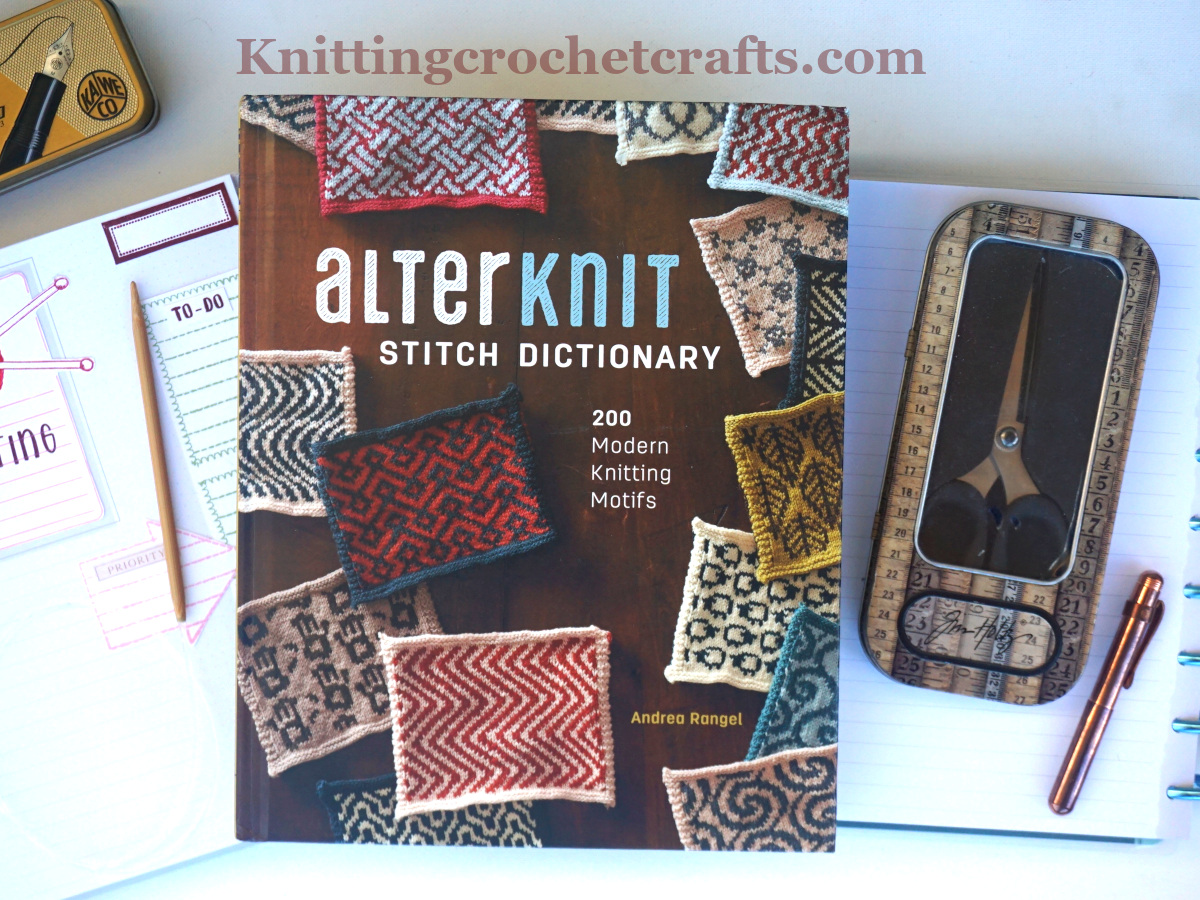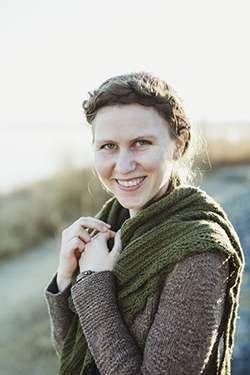
Have you “met” Andrea Rangel yet, either online or in person? If you have, I’m positive you’ll want to see her latest work-in-progress and discover the interesting insights she has shared with our community — and if you haven’t, I’m excited to introduce you to Andrea and her fresh, wearable knit designs.
Andrea is a pattern designer who has now authored two knitting books, both of which were published with Interweave Press. Her first book, Rugged Knits, is empowering numerous knitters to fill their closets with their own practical, wearable handmade sweaters and accessories; and her latest book, The Alterknit Stitch Dictionary, is a combination of knitting pattern book, technique book and stitch dictionary. The book features charts, lovely color photos of the stitch patterns, technical knitting information, and patterns for multiple complete knitting projects including sweaters, hats and others.
The Alterknit Stitch Dictionary is the ultimate resource for anyone who wants to customize their knitting projects using stranded colorwork motifs or stitch patterns. It’s also a helpful reference for anyone who is interested in learning how to knit stranded colorwork or further their stranded colorwork knitting skills. If you have even the slightest interest in the stranded colorwork technique, I think you’ll find this book useful — whether you’ve never tried the technique before, you’re a seasoned Fair Isle expert or your skill level falls somewhere in between.

I recently received a copy of The Alterknit Stitch Dictionary, and it is quickly becoming one of the most frequently-used knitting books in my library. After looking through the book, there were some things I became curious about, so I reached out to Andrea in search of answers. I’m excited to announce that Andrea agreed to share some insights with us all. The following is an email interview with Andrea; I emailed her the questions you see written in boldface type below. Her answers follow each question.
Amy says, “Andrea, congrats on the recent publication of The Alterknit Stitch Dictionary with Interweave Press. I really love the book, and I’m excited to discuss a few of the details with you. Please tell us a little bit about how you thought of the idea for this book.”
Andrea: “My husband, Sean, has always helped me out with colorwork motifs. For a long time he’d been drawing charts for me when I needed something I couldn’t find in a stitch dictionary. He’s got a background in fine art, so it was pretty quick for him to create a few different versions of similar ideas. It was actually his idea to create a colorwork stitch dictionary. We thought it could be really fun to bring some fresh, new motifs into the knitting world. So it was a joint project from inception to completion.”
Amy: “In your opinion, what differentiates The Alterknit Stitch Dictionary from all the other available knitting stitch dictionaries?”
Andrea: “AlterKnit is very niche – it’s two hundred motifs just in stranded colorwork, so it dives deep into that technique and gives creative knitters lots of options for customizing their work. It includes technical info and sample projects to help knitters get started, and also encourages folks to make the projects their own and use the motifs however they want. Since Sean isn’t much of a knitter, the motifs are taken more from his imagination and background in the art world than what you’ll see in traditional stranded knitting books. It includes some familiar shapes like Greek keys, but it’s mostly geometric and graphic motifs that he just invented himself. That means that it’s a pretty unique resource with motifs you won’t find in other books. We also got a bit goofy, so there are a few pretty ridiculous ones in there.”
Amy: “By now, I’m sure you’ve received significant amounts of feedback on The Alterknit Stitch Dictionary. Which of the stitch patterns in the book have been generating the biggest buzz with your readers so far? What types of projects are people making with these designs?”
Andrea: “The biggest buzz definitely surrounds some of the silly graphic motifs. The crowd favourite seems to be Masked Bandit, a racoon digging in a trash can and affectionately referred to as a trash panda. There’s also been a lot of love for Poopin’ Pig, which is exactly what it sounds like, and Cake or Death, a reference to a comedy sketch by Eddie Izzard. And knitters have been really actively using the book, which is so gratifying! I’ve seen hats, cowls, sweaters, socks, mittens, bags, and lots of other things too! I think the animals and other cheeky motifs get a lot of attention, but I expect that over time, knitters will be utilizing the more understated swirling and geometric motifs like Tempest and Advance even more. Though it is pretty wonderful to put pooping pigs on a hat for a 10-year-old, which is what I hear is happening a lot.”
Amy: “I laughed out loud when I saw the Cake or Death pattern, and that’s even considering the Eddie Izzard reference went right over my head. I bet it’s even funnier for those who get the joke!”
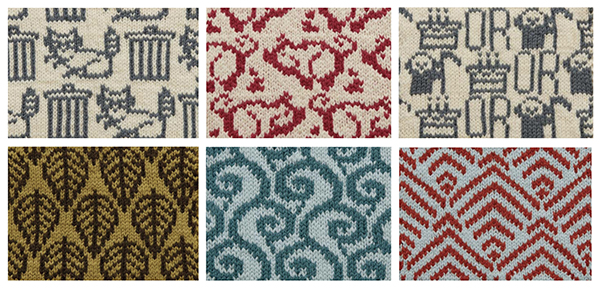
Amy: “I’m sure you’ve learned a significant amount from researching, designing, knitting and writing the patterns for the book. What’s one main takeaway that stands out in your mind now that the book is finished?”
Andrea: “Colorwork is really fun and flexible! Even after knitting more than two hundred swatches, five projects, and a bunch of tutorial stuff, I still really can’t get enough of it. “
Amy: “What do you find most appealing about stranded colorwork knitting?”
Andrea: “It’s such a great way to customize projects. Adding motifs or switching out motifs can make a totally different project even with the same number of stitches and kinds of yarn. I love how it opens up the options for personal creativity.”
Amy: “Let’s talk about your previous book, Rugged Knits. If you could sum up everything about this book in a single sentence, what would you tell us about it?”
Andrea: “Rugged Knits was a collection of all the outdoorsy knitted things I really wanted to wear when I was writing it.”
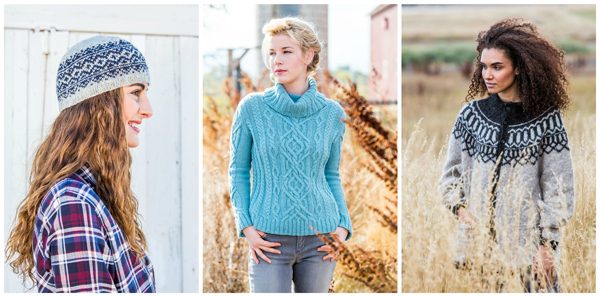
Amy: “Out of all the knitting projects you’ve designed over the years, which one do you find yourself wearing the most often?”
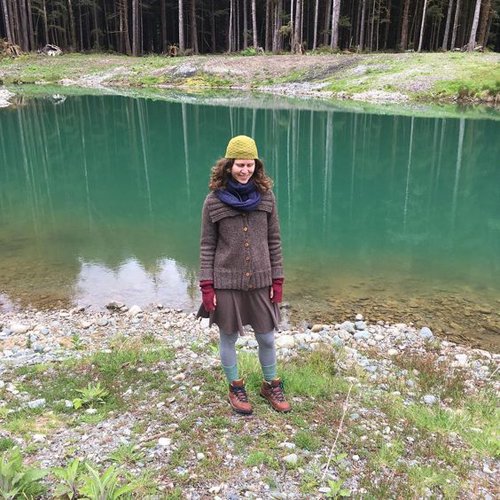
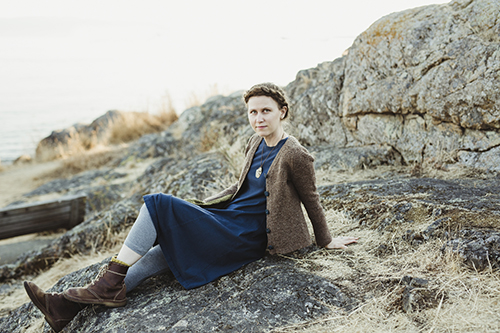
Amy: “What’s your greatest knitting accomplishment so far?”
Andrea: “I’m going to say it’s AlterKnit because it’s the thing I’ve seen the most knitters engage with. Spreading the love of knitting is a big part of my job, and the delight that folks have shared in response to the book makes me feel like I’m fulfilling my mission.”
Amy: “What are your top 3 favorite knitting or needlework reference books? Why are they your favorites?”
Andrea: “I use Barbara Walker stitch dictionaries all the time because they have so many motifs and they always get my imagination going. I haven’t needed to look up knitting techniques as much in the past few years as I did when I was a new knitter, but I used Elizabeth Zimmermann’s Knitting Without Tears and The Knitter’s Almanac a lot. And as a designer, I regularly refer to Shirley Paden’s Knitwear Design Workshop.”
Amy: “What are your professional goals for the rest of this year?”
Andrea: “I’d like to publish more indie work this year now that I’m not working on a book, and I’m going to be teaching more this year than in past years. I also plan to continue promoting AlterKnit“.
Amy: “Those are fantastic goals, Andrea! I wish you much success with meeting them. It’s wonderful to see that the Alterknit Stitch Dictionary has been so well received by its intended audience. Also, thanks for sharing your favorite resources with us; it’s an excellent list, and one I think our readers will find helpful and interesting.
“To those of you following along: Here’s a little hint about one of the interesting indie knitting patterns the future holds:”
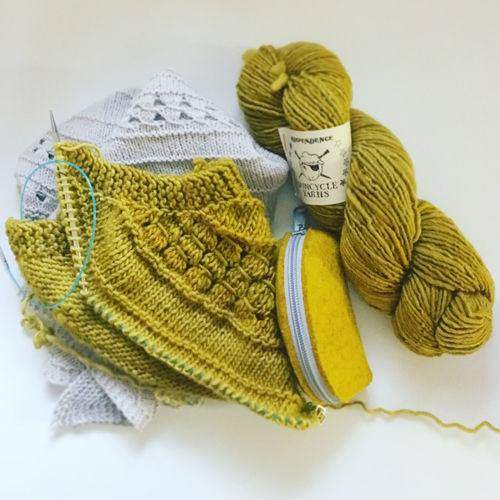
“Can you guess what this work-in-progress is destined to become?
“If you’re interested in finding the answer to that question, seeing how the project turns out or obtaining a copy of the pattern when it becomes available later this year, be sure to subscribe to Andrea’s newsletter to be alerted about her upcoming pattern releases. When you subscribe, you’ll also receive coupon codes for a free hat pattern and an additional discount on your purchase of Andrea’s other indie knitting patterns.”
Quick Links to the Resources We’ve Discussed in This Interview:
- You can find out more about the The Alterknit Stitch Dictionary and see more pictures of the stitch patterns and projects in my detailed book review; or you can check out book previews and buy the book at Amazon or zillions of other retailers. There are also many local yarn stores that offer the book for sale.
- If you’re interested in checking out any of Andrea’s favorite references, I have great news; they are all available for sale online. You can pick up a copy of Shirley Paden’s Knitwear Design Workshop at Amazon.
- You can buy Barbara Walker’s legendary stitch dictionaries at Amazon.
- Amazon also offers Elizabeth Zimmermann’s classic knitting texts including The Knitter’s Almanac at an exceptionally affordable price.
“The floor is open for reader comments, so please do share your thoughts — or let us know if you have any questions. I usually keep comment moderation turned on, so please forgive me if it takes a little time for me to approve your comment and respond to your questions. Thanks for your visit to Knittingcrochetcrafts.com today! We really appreciate your interest.”
The photos you see on this page are all courtesy of Andrea Rangel and were used with her permission.
Thanks for checking out this interview with knitting pattern designer and author, Andrea Rangel. I appreciate your interest!
I invite you to return to this site often for more knitting book reviews, craft tutorials, project ideas and inspiration! You can make sure you keep this site on your radar by signing up for my newsletter and community at Substack. .
Basic subscriptions are free; I send out regular newsletters to let my subscribers know about new craft articles and tutorials as they are posted. I also share details about the craft projects I’m working on, and invite my readers to share their projects, too. So there is no need to feel like it’s just you, crafting all alone at home. I’d love to have you join us! You’re invited!!
By Amy Solovay
Please Visit My Ko-Fi Shop HERE to Find My Sample Sale, Destash Sale and Digital PDF Pattern Downloads for Sale.
Please Visit My Ravelry Store HERE to Find Digital PDF Pattern Downloads for Sale.
About the Author:
Amy Solovay is a real, live, human content creator and educator who holds an Associate of Arts degree in Textile Design from FIDM LA (The Fashion Institute of Design and Merchandising, Los Angeles) and a Bachelor of Arts degree in mathematics from Sweet Briar College. She is NOT a robot and does not use artificial intelligence (AI) to write book reviews or articles for this website.
Amy learned to hand knit as a teenager, and she learned to machine knit in design school at FIDM. After graduation, she worked in the textile industry as a professional knit designer. She still enjoys hand knitting all these years later.
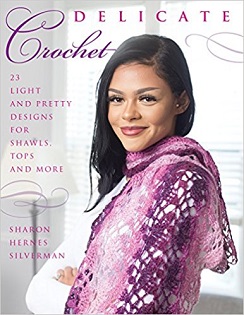
As an educator, Amy Solovay used to teach in-person college courses in trend forecasting, marketing and surface design at California Design College in Los Angeles. Nowadays she uses online platforms for sharing her knowledge about textiles, crafts, current color trends and current design trends.
Related Resources:
- All About Knitting
- Beginner’s Guide to Knitting Needles
- More of the Best Knitting Books for 2026 and Beyond
- Craft Project Ideas: Main Directory
- Our Latest Knitting, Crochet and Craft Blog Posts
This page was last updated on 11-17-2025.
